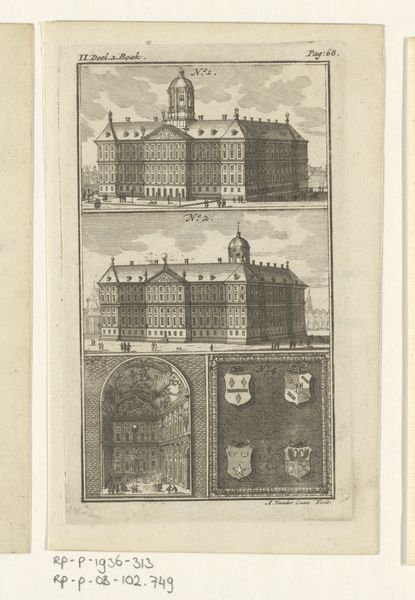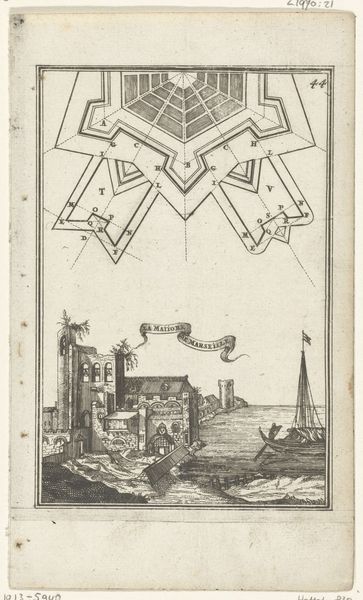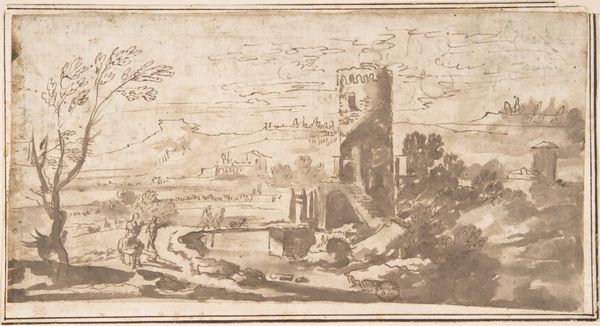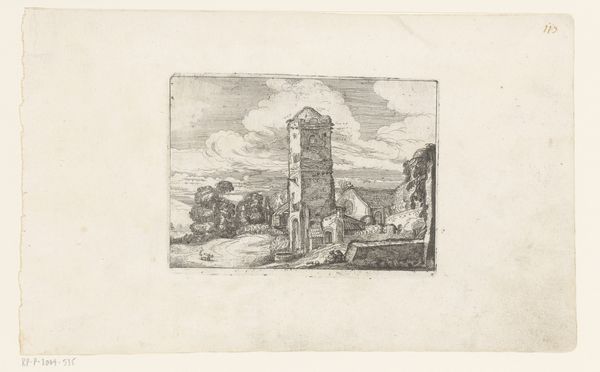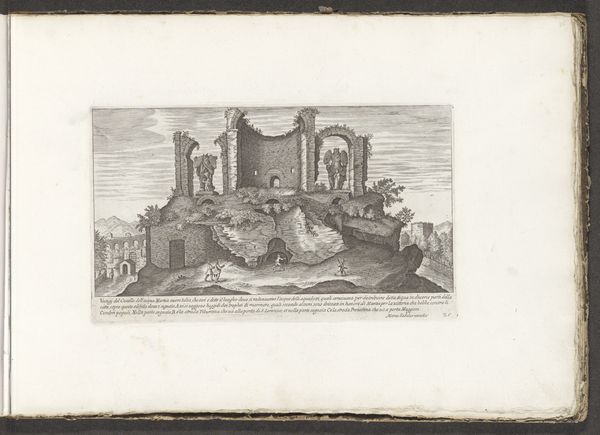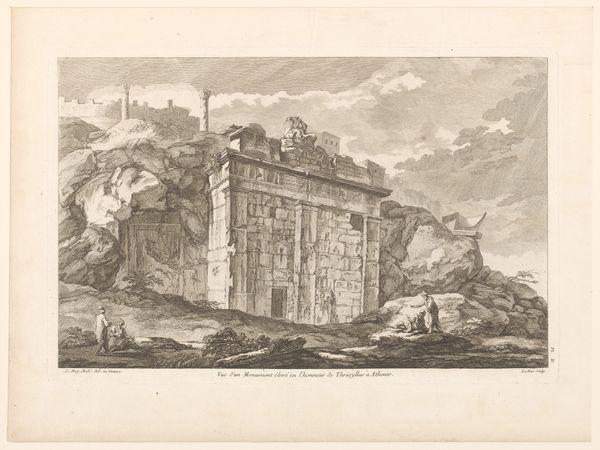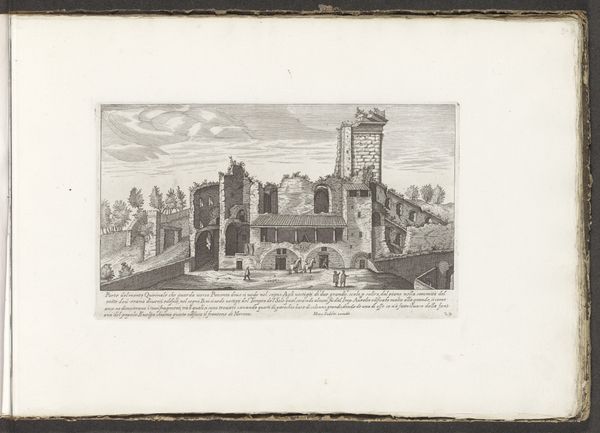
print, engraving, architecture
#
baroque
# print
#
landscape
#
form
#
line
#
cityscape
#
history-painting
#
engraving
#
architecture
#
realism
Dimensions: height 145 mm, width 86 mm
Copyright: Rijks Museum: Open Domain
Curator: Jan Goeree's "Twee gezichten op de ruïne van het Huis te Merwede bij Dordrecht," created in 1701, presents a fascinating study in decay and memory, rendered through engraving. What strikes you first? Editor: It’s hauntingly still, isn't it? Like a faded photograph of a forgotten dream. The stark lines of the engraving give the ruin a strange sort of beauty, a delicate fragility. It makes me wonder what stories those stones could tell. Curator: Precisely. Goeree was working during the Baroque period, but this image leans towards a nascent realism. The level of detail suggests meticulous observation of the ruined castle. Note the use of line to define texture, the crumbling brick, the way nature reclaims the site. The printmaking process itself involved considerable skill and labor, with each line carefully etched into the plate. Editor: There’s a somber elegance here, for sure, but also a distinct contrast. We have this romantic ruin in decay juxtaposed with the sharp, precise lines of the engraving. I also feel as though the portraits bookending the west view are silently guarding the legacy. It begs a question: what was the relationship between the printmaking and those original faces and architecture? Curator: That tension is compelling. Prints like these were often commissioned and circulated to document and even to advertise status. These aren't simple landscapes, but images tied to social and historical context; the House of Merwede was strategically important during periods of war, and by the turn of the 18th century its ruin carried weight, evoking past struggles and perhaps also cautionary lessons. Note also how, because this artwork appears to feature the East-West perspectives, these engravings might be interpreted as scientific or survey views rather than landscape views. Editor: Exactly, a dual purpose—almost like early real estate promotion pamphlets, ha! They immortalize not only the stones but the story associated with it, now just in the mist of the architectural and political struggles and decline, that very "spirit" almost seeps through in each crack in the brick. Curator: Ultimately, Goeree's work becomes more than just an image. It's a document, a cultural artifact reflecting the artistic sensibilities and the socio-political concerns of its time. Editor: Leaving us to reflect on time, power, and beauty… all etched in lines of gray. I find that deeply poetic.
Comments
No comments
Be the first to comment and join the conversation on the ultimate creative platform.


